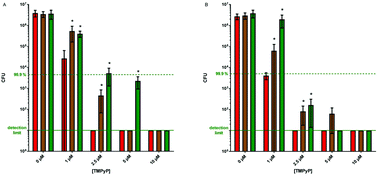Objectives: The objective of this experiment was to examine the contributions of audibility to the ability to perceive a gap in noise for children and adults. Sensorineural hearing loss (SNHL) in adulthood is associated with a deficit in gap detection. It is well known that reduced audibility in adult listeners with SNHL contributes to this deficit; however, it is unclear the extent to which hearing aid amplification can restore gap-detection thresholds, and the effect of childhood SNHL on gap-detection thresholds have not been described. For adults, it was hypothesized that restoring the dynamic range of hearing for listeners with SNHL would lead to approximately normal gap-detection thresholds. Children with normal hearing (NH) exhibit poorer gap-detection thresholds than adults. Because of their hearing loss, children with SNHL have less auditory experience than their peers with NH. Yet, it is unknown the extent to which auditory experience impacts their ability to perceive gaps in noise. Even with the provision of amplification, it was hypothesized that children with SNHL would show a deficit in gap detection, relative to their peers with normal hearing, because of reduced auditory experience. Design: The ability to detect a silent interval in noise was tested by adapting the stimulus level required for detection of gap durations between 3 and 20 ms for adults and children with and without SNHL. Stimulus-level thresholds were measured for participants with SNHL without amplification and with two prescriptive procedures—the adult and child versions of the desired sensation level i/o program—using a hearing aid simulator. The child version better restored the normal dynamic range than the adult version. Adults and children with NH were tested without amplification. Results: When fitted using the procedure that best restored the dynamic range, adults with SNHL had stimulus-level thresholds similar to those of adults with normal hearing. Compared to the children with NH, the children with SNHL required a higher stimulus level to detect a 5-ms gap, despite having used the procedure that better restored the normal dynamic range of hearing. Otherwise, the two groups of children had similar stimulus-level thresholds. Conclusion: These findings suggest that apparent deficits in temporal resolution, as measured using stimulus-level thresholds for the detection of gaps, are dependent on age and audibility. These novel results indicate that childhood SNHL may impair temporal resolution as measured by stimulus-level thresholds for the detection of a gap in noise. This work has implications for understanding the effects of amplification on the ability to perceive temporal cues in speech. ACKNOWLEDGMENTS: We thank Alex Baker, Brianna Byllesby, Evan Cordrey, and Clairissa Mollak for help in data collection and analysis. M. B. designed and performed experiments, analyzed data, and wrote the paper. All authors discussed analysis and implications and commented on the manuscript at all stages. This research was funded by grants R01 DC013591 (to R. M.), F32 DC12709 (to M. B.), P20 GM109023 (to M. B. and W. J.), and P30 DC4662 from the National Institutes of Health (NIH). Presented at the International Hearing Aid Research Conference, Lake Tahoe, Nevada, August 13, 2016. The authors have no conflicts of interest to disclose. Address for correspondence: Marc Brennan, University of Nebraska-Lincoln, 274 Barkley Center, Lincoln, NE 68583, USA. E-mail: marc.brennan@unl.edu Received February 21, 2017; accepted December 28, 2017. Copyright © 2018 Wolters Kluwer Health, Inc. All rights reserved.
http://ift.tt/2CNh0AT














